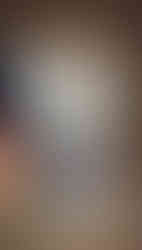Oil Painting Process
- KOH-I-NOOR HARDTMUTH

- Oct 1, 2022
- 4 min read

History of oil painting, types and properties of paints, varnishes and solvents, and supplies necessary for the beginning… to these topics, we dedicated the first part of the article on oil paints that interested many of you.
If you are just preparing for this master technique, let's read the second part of the article, where you'll find other helpful information concerning surface preparation, priming, painting process, and also final cleaning of tools. So go for it!

HOW TO PREPARE THE SURFACE FOR OIL PAINTING
Ideal and currently the most popular surface for oil painting technique is a painting canvas. When choosing a canvas, you have two options, buy a pre-stretched canvas on the frame, or purchase wooden laths for the frame and canvas separately, which will require a little more time and experience with stretching, though it's nothing too demanding.
Create a so-called blind frame from the mentioned wooden laths, on which you subsequently stretch the canvas. When constructing the canvas frame, you must remember to have right angles that are firmly connected. Therefore, a protractor and a rubber mallet come in handy.
Cut the canvas so that it would go about 5 centimeters beyond the frame. Before stretching, it's good to dampen the canvas for better manipulation.
Now you can prepare a stapler or nails and start stretching. It always starts from the center outwards, on the opposite side. If you start nailing in the middle of one of the longer sides, then you will do the middle of the opposite side after that. Continue to the edge of the side and do the same on the opposite.
SIZING
Sizing is the next step we shouldn't underestimate when preparing a canvas. It's because size serves as an impermeable layer of canvas, which also strengthens it. In case you damped the canvas before stretching it on the blind frame, let it dry well.
Mix rabbit skin glue with water, and boil for a while. Let cool down and apply with a wide paintbrush onto the canvas everywhere in all directions.
PRIMING

While having the size drying, prepare oil primer base and a wide paintbrush. If you buy a pre-stretched canvas, you may skip this step, as the canvas is often already treated.
If it's not the case, let's continue with priming. Mix up the gesso well and start applying it across the whole canvas, i.e., first vertically, then horizontally. The number of layers depends on the roughness and absorbency of the surface. Let the primed canvas dry, and then gently sand the surface with sandpaper.
PAINTS AND SUPPLIES
Having the canvas ready, let's get down to painting! For beginners would come in handy some pre-prepared sets, such as a set of artists' oil colors Mánes, where you find oil paints, but also titanium white, oil, solvent, brushes, graphite pencil, and a wooden palette. Simply everything you need to get started with oil painting.
In our online store, you also find Classic and Impression sets. Of course, oil paints, as well as brushes, are also available to buy separately, with a content of 16 ml, 40 ml, and 60 ml a tube.
PAINTING TECHNIQUES
Alla prima
In a nutshell, Alla prima is described as a wet-on-wet technique and is based on the principle of layering paints until they dry. This technique was made famous mainly by impressionists who needed to capture an impression of the moment. It's crucial to work fast and have a lot of experience in painting and drawing, whether in perspective, the use of paints, or the technique itself.
Layered oil painting
Layered oil painting is, despite its time and technical complexity, one of the most popular techniques ever. If you observe the correct procedure, the results are just breathtaking.
first phase = underpainting
The use of some light paints diluted by turpentine will create a monochrome composition. In the next phase, the arrangement of lights and shadows, i.e., tonal value, is indicated in the painting.
second phase = painting
Having the underpainting complete, you can start with the actual creation of a painting. Remember that the under layers should be as thin as possible and vice versa, each successive layer getting thicker. That's why the first layers are diluted by the turpentine and the upper layers by oil because the subsequent layer must never dry sooner than the one underneath.
third phase = glazing
The essence of the final phase lies in painting corrections, such as illustrating highlights and shadows, accentuating perspective, textures, and so on. Again, we recommend using turpentine for diluting the paints, as this is the finishing phase. For a final coat of varnish, use a solution of damar resin in turpentine.
BRUSHES AND PALLET CLEANING
Diluted turpentine will serve you well also for cleaning the tools utilized for oil painting. Wash the brushes two or three times, and don't forget to change the solvent for clean ones. Having the brushes clean, dry them with a cloth and let them dry completely, preferably hung, or let them in a vertical position, with the bristles facing up.
Although many years have passed since the invention of oil painting, it's still one of the most popular techniques ever. Many experienced artists take advantage of its specific qualities, such as academic painter František Hodonský, and talented painter Sofie Švejdová, but also very young graduates of art schools, including Štěpán Rubáš and Jan Heres.

František Hodonský - Lužní světlo

Sofie Švejdová - Hadi

Štěpán Rubáš - Rekvizity

Jan Heres - Winter Wonderland
You can also find a lot of inspiration on Instagram. For example, we came across ave.mariiia profile, where you can see beautiful oil paintings of all kinds. Fingers crossed with your own creation!























Comments